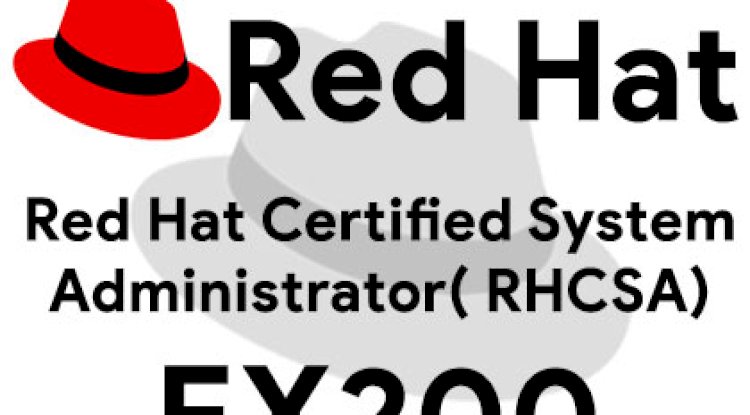Critical CVE-2025-29987 Vulnerability in Dell PowerProtect Systems | How to Patch and Prevent Remote Root Access Exploits
The recently discovered vulnerability CVE-2025-29987 in Dell PowerProtect Data Domain systems poses a major security risk due to insufficient granularity of access control in older versions of the Data Domain Operating System (DD OS). This flaw enables authenticated users from trusted remote clients to execute arbitrary commands with root privileges, potentially leading to data breaches, denial of service, or complete system compromise. Affected systems include Dell PowerProtect appliances, Data Domain Virtual Edition, and Dell APEX Protection Storage. Dell has released patched versions—8.3.0.15, 7.13.1.25, and 7.10.1.60—which must be applied immediately to prevent exploitation. This blog details everything from vulnerable versions to mitigation steps and answers to the most common questions users and IT admins might ask.

Table of Contents
- Understanding the CVE-2025-29987 Vulnerability
- Affected Dell Products
- Vulnerable and Patched Versions
- Why This Vulnerability Is Critical
- Immediate Actions for Mitigation
- Organizational Risk and Compliance Concerns
- Conclusion
- Frequently Asked Questions (FAQs)
A newly discovered critical security vulnerability has been identified in Dell Technologies PowerProtect Data Domain systems, posing a significant threat to enterprise data security. The flaw, officially tracked as CVE-2025-29987, could allow attackers to remotely execute arbitrary commands with root privileges by exploiting weak access control mechanisms in outdated versions of the Data Domain Operating System (DD OS).
Understanding the CVE-2025-29987 Vulnerability
The vulnerability stems from an “Insufficient Granularity of Access Control” within the DD OS. Specifically, an authenticated user from a trusted remote client can leverage this flaw to gain root-level access and execute arbitrary commands on the affected system.
This exploit does not require sophisticated privilege escalation techniques. Once authenticated, a malicious actor can hijack the system, leading to potentially devastating consequences such as data exfiltration, data tampering, and complete system compromise.
Affected Dell Products
This vulnerability impacts multiple Dell PowerProtect Data Domain product lines, including:
-
Dell PowerProtect Data Domain appliances
-
Dell PowerProtect Data Domain Virtual Edition (DD VE)
-
Dell APEX Protection Storage
Vulnerable and Patched Versions
Dell has released detailed information about the affected and remediated DD OS versions. If your system is running any of the following versions, it is considered vulnerable:
| CVE ID | Affected Versions | Remediated Versions |
|---|---|---|
| CVE-2025-29987 | - Prior to 8.3.0.15 | - 8.3.0.15 or later |
| - 7.13.1.0 through 7.13.1.20 | - 7.13.1.25 or later | |
| - 7.10.1.0 through 7.10.1.50 | - 7.10.1.60 or later |
Why This Vulnerability Is Critical
PowerProtect systems are commonly deployed in enterprise environments as core data protection and backup infrastructure. An attacker gaining root access to these systems could:
-
Tamper with or delete critical backup data
-
Exfiltrate confidential business or customer information
-
Launch internal attacks on other systems via lateral movement
-
Disrupt recovery operations through ransomware or DoS attacks
What makes this vulnerability particularly dangerous is that it can be exploited by authenticated users from trusted clients, bypassing many traditional security barriers that would otherwise prevent unauthorized access.
Immediate Actions for Mitigation
Organizations using Dell PowerProtect systems must take the following actions without delay:
-
Patch immediately: Upgrade to the remediated DD OS versions listed above.
-
Limit remote access: Restrict trusted client access using strict network segmentation.
-
Enable multifactor authentication (MFA): Ensure that even authenticated users are strongly verified.
-
Monitor logs and alerts: Audit access and command logs for any suspicious root-level activity.
-
Harden system configurations: Disable unnecessary services and enforce least-privilege policies.
Organizational Risk and Compliance Concerns
Unpatched systems can lead to compliance failures under data protection regulations such as GDPR, HIPAA, and industry-specific standards. Beyond regulatory penalties, a successful exploit could cause irreparable harm to an organization's reputation, especially if backup systems are compromised during a cyber incident or ransomware attack.
Conclusion
The CVE-2025-29987 vulnerability in Dell PowerProtect Data Domain systems is a high-severity issue that must be addressed immediately. Dell has acted quickly by releasing patched DD OS versions, and it is now the responsibility of security teams and IT administrators to ensure their systems are updated.
Backup systems are your last line of defense against data loss. Don’t leave them exposed.
Frequently Asked Questions (FAQs)
What is CVE-2025-29987 and why is it critical?
It is a high-severity vulnerability in Dell PowerProtect systems that allows an authenticated remote user to execute commands with root privileges.
Which Dell products are affected by CVE-2025-29987?
Affected products include Dell PowerProtect Data Domain appliances, Virtual Edition, and APEX Protection Storage.
What operating system versions are vulnerable?
DD OS versions before 8.3.0.15, 7.13.1.0–7.13.1.20, and 7.10.1.0–7.10.1.50 are vulnerable.
What is the main cause of the vulnerability?
It is caused by insufficient granularity in access control settings within the DD OS.
What could attackers do if they exploit this vulnerability?
They could gain root access, manipulate or delete data, and control the entire system remotely.
How can organizations fix this issue?
By upgrading to the patched versions: 8.3.0.15, 7.13.1.25, or 7.10.1.60.
Is this vulnerability exploitable without authentication?
No, it requires an authenticated user from a trusted remote client.
Can this vulnerability be used in ransomware attacks?
Yes, attackers can leverage root access to encrypt or destroy backup data.
What is the impact of this flaw on business continuity?
It can compromise backup systems, putting recovery operations at serious risk.
Is there a CVSS score available for CVE-2025-29987?
While not officially listed, it would likely rank as a high or critical severity score.
Has Dell released a security advisory for this vulnerability?
Yes, Dell has issued official guidance and remediated software versions.
Can the exploit be detected with antivirus or EDR?
Not directly; EDR tools may detect unusual root-level activity if configured properly.
Are Dell APEX services vulnerable as well?
Yes, APEX Protection Storage systems running vulnerable DD OS versions are affected.
Can this exploit be used for internal lateral movement?
Yes, once root access is achieved, attackers could use the system as a pivot point.
Is the vulnerability being actively exploited in the wild?
There are no public reports yet, but unpatched systems remain at high risk.
How do I check my DD OS version?
Log in to the Data Domain CLI or GUI and view the system version under system information.
Is the patch process disruptive to services?
Patching may require a brief service window or maintenance reboot depending on the environment.
What if we cannot patch immediately?
Limit remote access, enforce MFA, and closely monitor system logs until patching is possible.
Are virtualized Data Domain instances also affected?
Yes, both physical and virtual deployments are impacted.
What are the best practices for patching Dell appliances?
Back up configurations, schedule maintenance, and apply the official upgrade from Dell’s portal.
Can firewall rules help reduce the attack surface?
Yes, restrict inbound access to only necessary and secure IP ranges.
Is multi-factor authentication useful against this exploit?
It can reduce risk but won’t prevent exploitation after successful login.
What does "insufficient access control" mean technically?
It means access policies do not properly isolate user privileges, allowing elevated actions.
Could a compromised internal account exploit this vulnerability?
Yes, especially in environments where single sign-on is linked to backup systems.
Should backup logs be monitored for unusual activity?
Absolutely, especially commands executed by non-root users or external login attempts.
What regulatory risks are involved if compromised?
Failure to patch could result in GDPR, HIPAA, or other compliance violations.
How often should critical backup infrastructure be audited?
Regularly—monthly for patches and weekly for log monitoring is recommended.
Are future updates likely to fix related flaws?
Yes, Dell may continue hardening DD OS security in upcoming releases.
Where can I download the patched DD OS versions?
They’re available via the official Dell support portal under your product’s software updates section.
Can organizations automate patch deployment for DD OS?
Automated patching is possible using Dell EMC deployment tools and scripting workflows.












![Top 10 Ethical Hackers in the World [2025]](https://www.webasha.com/blog/uploads/images/202408/image_100x75_66c2f983c207b.webp)

![[2025] Top 100+ VAPT Interview Questions and Answers](https://www.webasha.com/blog/uploads/images/image_100x75_6512b1e4b64f7.jpg)









